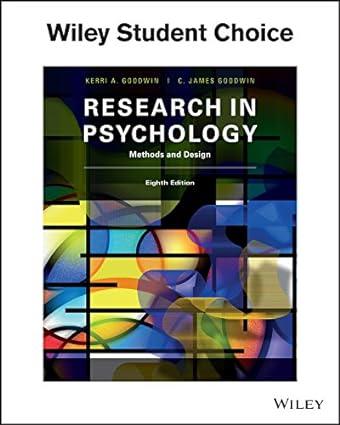The following exercise is based on a study by Galvin and Herzog (1992) and is used with
Question:
The following exercise is based on a study by Galvin and Herzog (1992) and is used with the permission of Hal Herzog. The idea is for you to play the role of a member of an IACUC (Institutional Animal Care and Use Committee) and make decisions about whether the following studies ought to gain IACUC approval (quoting from Galvin & Herzog, p. 265):
1. Mice. A neurobiologist proposes to amputate the forelimbs of newborn mice to study the relative influence of heredity and environment on the development of motor patterns (grooming).
2. Rats. A psychologist seeks permission to conduct a classroom learning demonstration. Rats are to be deprived of food for 23 hours and taught to press a lever for food reinforcements.
3. Monkeys. Tissue from monkey fetuses will be implanted into the brains of adult rhesus monkeys to explore the feasibility of neural transplantation as a treatment for Alzheimer’s disease.
4. Dogs. Stray dogs awaiting euthanasia in an animal shelter are to be used to teach surgical techniques to veterinary students.
5. Bears. Wild grizzly bears will be anesthetized. Collars containing radio telemetry devices will be attached to their necks for a study of their social and territorial behavior patterns.
For each of these studies, do a cost‐benefit analysis, indicate whether you would approve the study, and explain the reasons why or why not. In terms of the ethics code, indicate whether some changes in procedure might switch your decision from “reject” to “approve.”
Step by Step Answer:






